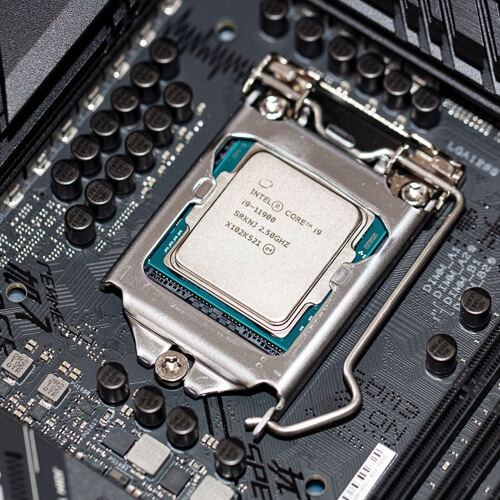Intel: Chip shortage will extend to at least 2023
Intel sees shares fall as its PC chip business and margins shrink, but Gelsinger is betting big on spending its way to being a major-player foundry.

The chip shortage won't end until 2023, says Intel CEO Pat Gelsinger.
"We're in the worst of it now; every quarter next year, we'll get incrementally better, but they're not going to have supply-demand balance until 2023," Gelsinger told CNBC.
It wasn't especially great news for Intel, which saw shares fall over 8% after its PC chip business shrank 2% in the last quarter.
Figure 1:  Endangered species: The global chip and semiconductor shortage will go on until at least 2023, according to Intel, whose i9 processor is pictured.
Endangered species: The global chip and semiconductor shortage will go on until at least 2023, according to Intel, whose i9 processor is pictured.
(Ruslan Lytvyn / Alamy Stock Photo)
The chip shortage meant fewer laptops being assembled, with customers lacking other parts they needed to finish putting computers together. Intel is building on a grand scale, spending $20 billion on projects including a new chip foundry in Arizona. It has notions of being a foundry that manufactures chips for other chip designers.
It expects $74 billion in revenues in 2022 ($1 billion higher than analyst estimates), and capital expenditures from $25 billion to $28 billion in 2022 and more in the years after.
Edit margins
But the flip side is the company's gross margin and cash flow will be tighter in the next two or three years as a result.
Intel says its margin, 56% in the last quarter (actually a 2.9% improvement over a year ago), won't dip below 50%, and will recover after. It says 51% to 53% is most likely. For all that, its numbers weren't bad. Its $19.2 billion in revenue was a $900 million improvement over a year ago, and its $6.8 billion net income was up from $4.3 billion in the year-ago quarter.
The Client Computing Group (its largest, which sells chips to PC makers) and Non-Volatile Memory Solutions (which it's selling to SK Hynix) were the only two parts of the company not to grow.
Its Data Center group saw its revenue grow 10%, though its $6.5 billion in sales slightly missed analysts' predictions (at $6.6 billion) with Chinese cloud vendors adapting to new government rules.
AMD is also nibbling into Intel's market share.
Alan Turning
Choosing to "pivot" and "repositioning Intel for growth" is at the base of Gelsinger's long-term bet on its future in the foundry business.
It's a vision of rapidly moving through "5 nodes in 4 years", as he puts it, which the company is currently calling Intel 7 (formerly Enhanced SuperFin), 4 (which used to be 7nm), 3, 28 and 18A.
As Intel angles for more customers, Cupertino won't be one.
Apple is bidding Intel goodbye with its M1 Pro chips, announced earlier this week at the Apple Event.
"Apple (not a computer chip company) has built better chips for the Mac than Intel (100% a computer chip company)", tweeted New York Times journalist Shira Ovide.
Want to know more about the Internet of Things? Check out our dedicated IoT content channel here on
Light Reading.
Admittedly it's easier to optimize a chip when you know exactly what the rest of the computer will look like. Intel designs its chips for hundreds of PC brands. Some analysts seemed to see the genius of the gamble, even if Intel's stock dipped with the news about the company's margins.
"History may look back on Intel and note that Gelsinger is their best CEO since Andy Grove," kvelled analyst Ben Bajarin on Twitter.
Related posts:
— Pádraig Belton, contributing editor special to Light Reading
About the Author(s)
You May Also Like




_International_Software_Products.jpeg?width=300&auto=webp&quality=80&disable=upscale)







